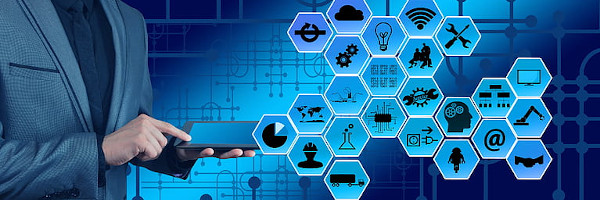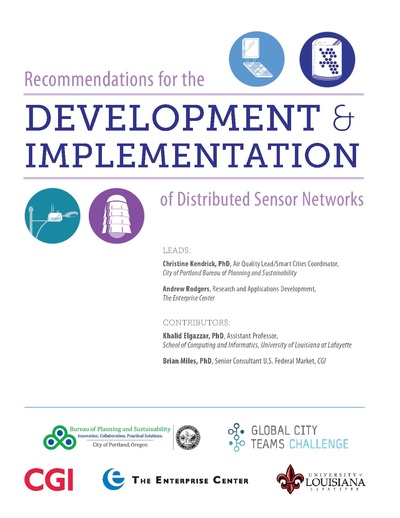Sensor Technology
| Transportation | ||||||||||||||||
|---|---|---|---|---|---|---|---|---|---|---|---|---|---|---|---|---|

| ||||||||||||||||
| Sectors | Data Transportation Utility | |||||||||||||||
| Contact | Wilfred Pinfold | |||||||||||||||
| Topics |
| |||||||||||||||
Activities
Press
| ||||||||||||||||
- Authors
Sensor technologies play a crucial role in smart systems by providing real-time data on the status and conditions of these systems, enabling them to make decisions and take actions based on the data received.
Technologies
Some examples of sensor technologies used in smart systems include:
- Temperature, Humidity and Pressure sensors: These sensors are used to collect data on the environment and infrastructure systems.
- Smart cameras and video analytics: These technologies are used for monitoring and surveillance, such as detecting objects and people, tracking movements, and identifying patterns and anomalies.
- LiDAR and radar sensors: These sensors are used to detect and measure objects and features in the environment, such as traffic, pedestrians, and obstacles.
- Acoustic sensors: These sensors are used for sound detection and analysis, such as speech recognition, sound localization, and noise reduction.
- Infrared and thermal sensors: These sensors are used to detect heat and temperature variations, such as in industrial processes, building energy management, and medical applications.
- Magnetic and electromagnetic sensors: These sensors are used to detect and measure magnetic fields, such as in navigation, robotics, and metal detection.
- Chemical and gas sensors: These sensors are used to detect and measure specific chemical compounds or gases, such as in environmental monitoring, industrial process control, and medical diagnostics.
- Force and pressure sensors: These sensors are used to detect and measure physical forces and pressures, such as in robotics, industrial automation, and human-computer interaction.
- Biometric sensors: These sensors are used to measure and analyze biological and physiological data, such as fingerprints, facial recognition, and heart rate monitoring.
All these sensor technologies provide a rich source of data that can be used to improve the performance, efficiency and intelligence of smart systems, by enabling real-time monitoring, decision making and control, predictive maintenance and optimization of resources. These sensors come in various sizes and packages including micro-sensors that can be dispersed in the environment to monitor specific conditions and send data back to a central hub often called smart dust.
Smart City Infrastructure
We define a smart city as one that has purpose (sustainability, equity, traffic safety) to its planning and measures results of its actions towards achieving that purpose. For this reason we consider three elements fundamental to a smart city: (1) A planning process based on a deep understanding of the needs of the community, (2) A set of metrics to measure progress, and (3) A data platform to enable data collection and measurement against metrics. A smart city is therefore a dynamic city that makes living in a dense urban environment more civil and more rewarding.
A smart city is not only attractive to people who live there, but to people who visit and companies doing business there. As already explained, we consider a data platform to enable data collection and measurement against planning metrics to be fundamental to a smart city. The goal is to make decisions based on data. Such a platform would enable a real time response to demand, events and emergencies. It would allow planners to make sure the city’s budget is used as effectively and efficiently as possible to meet the city's goals. This represents one way that cities can break down silos and use data intelligently so that government operates as a true enterprise, rather than as a series of loosely linked departments and agencies.
Through greater data availability citizens can be better engaged, and system managers can see further and more holistically.















